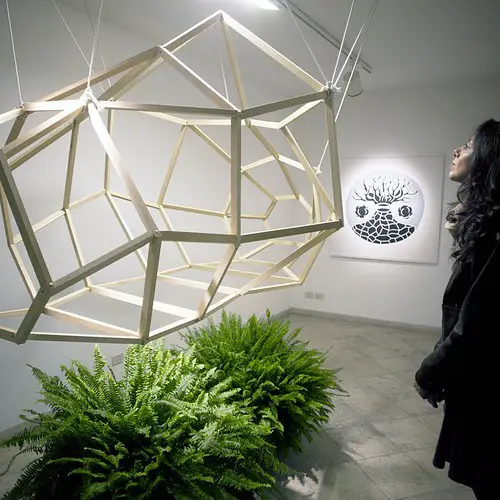Indoor Boston Fern Winter Care Tips for Thriving Indoors
Transitioning from the luscious, summery outdoors to the sometimes harsh indoor climate can be a critical phase for many beloved plants, especially the delicate Boston Ferns. These emerald beauties, with their arching fronds and air-purifying properties, are not just plants, but an integral part of the aesthetic and air quality we cultivate within our homes. However, as winter approaches, keeping your Boston Ferns robust and vibrant indoors requires a shift in care strategy due to the significant environmental changes.
If you’re a plant enthusiast or a home gardener with a penchant for these foliage stars, fret not; this blog post is your comprehensive guide for nurturing and protecting your Boston Ferns during the colder months.

Understanding Boston Ferns
What’s the fuss about Boston Ferns? These hardy ferns are a staple of indoor gardening, known for their lush greenery and air-purifying qualities. The Nephrolepis exaltata, commonly known as the Boston Fern, is a tropical plant native to humid forests, which explains their preference for equable indoor climates. Their aesthetic appeal and relatively easy care requirements make them a favorite for novice and experienced plant enthusiasts alike.
Why are they popular indoor plants?
- Clean Air Allies: Boston Ferns are part of NASA’s Clean Air study, noted for their ability to remove pollutants from indoor air.
- Accent of Green: Their vibrant green foliage adds a refreshing touch to any indoor space, from living rooms to offices.
- Low Maintenance: When provided with the right conditions, these ferns can thrive with minimal fuss.
Winter Care Tips for Your Boston Ferns
1. Proper Lighting
Boston Ferns are partial shade plants, used to filter light conditions found beneath the canopies of trees in their natural habitat. In winter, when natural light is reduced, placement near a brightly-lit window but out of direct sunlight is optimal. Here’s how to manage their light exposure during gloomy winter days:
- Rotate Regularly: To combat uneven growth due to one-sided light exposure, rotate your fern by 45-90 degrees each week.
- Artificial Light: Supplement with grow lights if natural light is consistently lacking. Lights that mimic daylight for 12-14 hours are beneficial.
2. Temperature and Humidity Control
Boston Ferns favor a constant room temperature ranging between 60 to 75°F (15 to 24°C), avoiding drafts from heaters or air conditioners. Humidity levels can drop indoors during winter, risking frond browning and stress for your ferns.
- Humidity Trays: Group plants together on trays filled with water and pebbles to increase local humidity.
- Humidifiers: Use a room humidifier to maintain an adequate level of humidity, ideally between 50-70%.
3. Watering Techniques
One of the most common mistakes during winter is overwatering due to the misconception that plants need more water in colder weather. It’s crucial to adjust your watering schedule to prevent root rot.
- The Finger Test: Insert your index finger into the top inch of the soil; water when it feels dry to the touch.
- Check the Roots: Monitor the roots’ moisture levels over the winter, especially if they’re in a pot with poor drainage.
4. Fertilization
Like a bear storing fat for winter, your Boston Fern can benefit from an ‘energy boost’ in the form of fertilizer. However, don’t overdo it.
- Slow-Release Fertilizer: Apply a balanced liquid fertilizer (10-10-10) at half-strength once a month, preferably in the morning when your fern is actively transpiring.
- Watch for Signs: If new growth appears stunted or discolored, it could be a sign of over-fertilization.
5. Pest Control
Winter stress can make your Boston Fern more vulnerable to pests like spider mites and mealybugs. Vigilance is key.
- Inspection: Regularly inspect the undersides of fronds for any signs of infestations, like webbing or cotton-like masses.
- Control Isolation: If you find pests, isolate the affected fern and treat it promptly to prevent the infestation from spreading.

Maintenance Tips for Prime Fern Health
Trims and Grooming: To maintain the beauty and health of your Boston Fern, remove any yellow or brown fronds. Trim back any excessive growth to keep it from touching walls or furniture, which can lead to pest problems or humidity issues.
Stress Sensitivity Checks: Keep a close eye on your fern for indications of stress, such as sudden leaf drop, frond wilting, or discoloration. Address any issues immediately to prevent further damage.
Case Studies and Success Stories
Home Gardener Success Story
A home gardener noticed their fern’s fronds turning brown and crispy during winter. After adjusting the watering routine and placing a humidifier nearby, within a few weeks, the fern began to show signs of recovery with new, healthy growth.
Apartment Gardening Challenges
An apartment dweller struggled to find the right lighting for their Boston Ferns. They installed shelf grow lights, and by following a regular rotating schedule, the ferns flourished despite the limited natural light.
Community Garden Best Practices
In a community garden setting, members shared responsibilities for monitoring and adjusting conditions for the collective Boston Ferns. By open communication and shared greenhouse use, they ensured all their ferns stayed healthy and vibrant during the winter.
Bringing It All Together
Giving your Boston Ferns the care they need in winter will not only maintain their health but also enhance your indoor space with natural beauty and air-purifying capabilities. By regulating light, temperature, humidity, watering, fertilization, and pest prevention, your ferns can and should thrive, not just survive, this winter season. Happy caretaking, home gardeners — your emerald charges await your nurturing touch and attentive eye!






